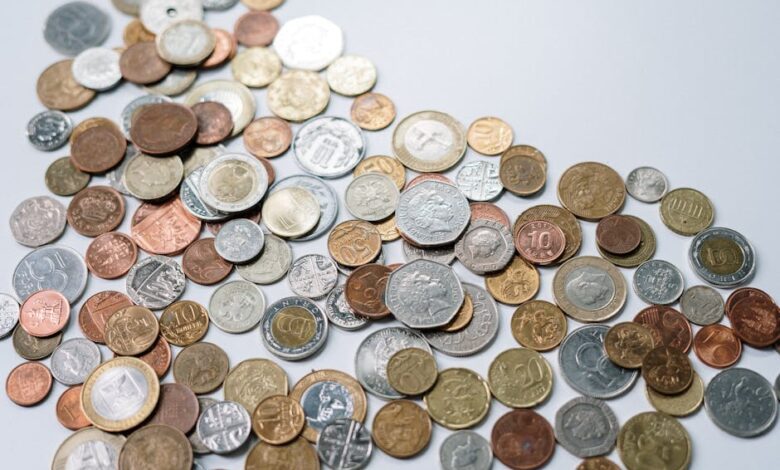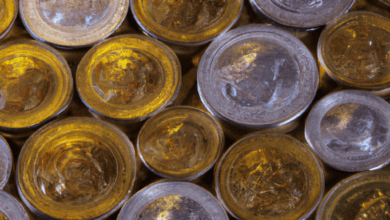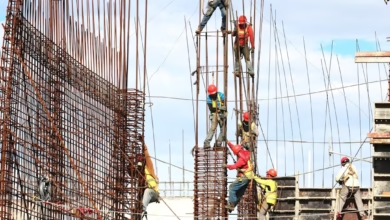Metals in Motion: Exploring Industrial Demand, Investment Strategies, and Economic Indicators

In an ever-evolving global economy, the dynamics of metal markets play a crucial role in shaping both industrial practices and investment strategies. This article delves into the multifaceted world of metals, exploring the unique characteristics and market behaviors of key players such as silver, copper, and rare earth elements. With silver straddling the line between industrial utility and investment appeal, its role is particularly noteworthy as industries increasingly seek sustainable materials. Similarly, copper prices serve as a barometer for economic health, reflecting trends that resonate across global markets. As the green energy revolution gains momentum, the demand for rare earth metals surges, highlighting the intersection of technology and resource management.
Additionally, we will compare platinum and palladium in the context of investment opportunities, examine how inflation influences the pricing of precious and industrial metals, and discuss the future of aluminum in a sustainable economy. The article will also consider the implications of mining regulations on market prices, providing a comprehensive overview of how these factors intertwine to shape the landscape of metal investments. Join us as we navigate these complexities and uncover the critical roles that metals play in diversifying investment portfolios and driving industrial innovation.
- 1. **Navigating the Metal Markets: Silver's Dual Role in Industry and Investment**
- 2. **Copper as an Economic Indicator: Understanding Price Fluctuations and Global Trends**
- 3. **The Green Revolution: How Renewable Energy Shapes Demand for Rare Earth Metals**
1. **Navigating the Metal Markets: Silver's Dual Role in Industry and Investment**
Silver plays a unique and multifaceted role in both industrial applications and investment markets, making it a metal of significant interest to investors and manufacturers alike. On the industrial side, silver is prized for its exceptional conductivity, thermal properties, and antimicrobial characteristics. These properties make it indispensable in a variety of applications, including electronics, solar panels, medical devices, and batteries. As industries increasingly adopt green technologies, the demand for silver in photovoltaic cells and energy storage solutions is expected to grow, further solidifying its position in the industrial market.
Simultaneously, silver serves as a traditional investment asset, often viewed as a safe haven during times of economic uncertainty. Investors typically turn to silver as a hedge against inflation and currency devaluation. The metal's historical significance as a store of value, combined with its accessibility compared to gold, makes it an attractive choice for both seasoned investors and newcomers.
Navigating the silver market requires an understanding of the interplay between its industrial demand and investment appeal. For instance, fluctuations in industrial demand can significantly influence silver prices. A surge in renewable energy initiatives may drive prices up due to increased consumption, while economic downturns can lead to reduced industrial activity, impacting demand negatively. Conversely, investor sentiment can also sway silver prices, particularly during periods of financial instability or geopolitical tensions.
Ultimately, silver's dual role creates a dynamic market landscape that investors must carefully analyze. Staying informed about industrial trends, global economic indicators, and investment patterns is essential for effectively navigating this complex metal market. As both an industrial commodity and a financial asset, silver offers unique opportunities and challenges that merit close attention from stakeholders in both sectors.
2. **Copper as an Economic Indicator: Understanding Price Fluctuations and Global Trends**
Copper, often referred to as “Dr. Copper” due to its ability to reflect economic health, serves as a crucial indicator of global economic activity. The price of copper tends to fluctuate based on various factors, including supply and demand dynamics, geopolitical developments, and macroeconomic conditions. As a vital component in construction and electrical applications, copper demand typically rises during periods of economic growth, leading to higher prices. Conversely, during economic downturns, reduced construction activities and manufacturing output can result in decreased demand, causing prices to fall.
Global trends significantly influence copper prices. For instance, China, as the largest consumer of copper, has a profound impact on the market. Economic policies, infrastructure projects, and manufacturing output in China directly affect global copper demand and prices. Additionally, fluctuations in copper supply due to mining disruptions, labor strikes, or environmental regulations can lead to price volatility.
Investors and analysts closely monitor copper price movements as they often correlate with broader economic indicators such as gross domestic product (GDP) growth, industrial production, and construction spending. A rise in copper prices may suggest robust economic growth, while a decline could indicate economic stagnation or contraction. Understanding these price fluctuations helps investors and policymakers gauge the overall health of the economy and make informed decisions regarding investments and resource allocation.
3. **The Green Revolution: How Renewable Energy Shapes Demand for Rare Earth Metals**
The transition toward renewable energy sources is significantly impacting the demand for rare earth metals, which are critical components in various green technologies. As nations strive to reduce their carbon footprints and enhance energy efficiency, the need for materials that enable these advancements has surged. Rare earth metals, such as neodymium and dysprosium, are essential in the production of powerful magnets used in wind turbines and electric vehicle (EV) motors. The rise in EV adoption and the expansion of wind energy infrastructure are driving this demand, as these technologies rely heavily on rare earth elements for performance and efficiency.
Additionally, advancements in battery technology, particularly those aimed at improving energy storage solutions for solar and wind energy, further amplify the need for rare earth metals. Lithium-ion batteries, which are pivotal in the renewable energy landscape, often incorporate rare earth elements to enhance their functionality and longevity. Consequently, as the global push for clean energy intensifies, the demand for rare earth metals is expected to rise, creating both opportunities and challenges in supply chain management.
However, the sourcing of rare earth metals is not without complications. Environmental concerns and geopolitical factors play a crucial role in the availability of these resources. Many rare earth metals are mined in regions with lax environmental regulations, raising sustainability concerns. Moreover, the concentration of rare earth production in specific countries, notably China, presents risks related to supply chain stability and pricing volatility. As the green revolution progresses, finding a balance between meeting demand and ensuring responsible sourcing will be essential for the future of renewable energy technologies and the broader economy.
In conclusion, the dynamics of metal markets are intricate and heavily intertwined with global economic trends, technological advancements, and investment strategies. Silver's dual role underscores its importance not only as a precious metal for investment but also as a critical component in various industrial applications. Meanwhile, copper prices serve as a barometer for economic health, reflecting broader market sentiments and trends. The growing emphasis on green energy technologies continues to elevate the demand for rare earth metals, aligning with the global shift towards sustainability.
As we weigh the merits of platinum versus palladium, investors must consider not only current market conditions but also long-term viability in their portfolios. Metals, in general, are proving to be essential for diversification, offering a hedge against inflation that can significantly impact both precious and industrial metal prices. Looking ahead, aluminum's role in a sustainable economy positions it as a crucial player in future developments, while mining regulations remain a vital factor influencing metal pricing and availability.
In summary, understanding these relationships and trends is essential for investors and industry stakeholders alike. The interplay between these elements shapes the future of metal markets, highlighting the need for a nuanced approach to investing and resource management in an increasingly complex economic landscape.





